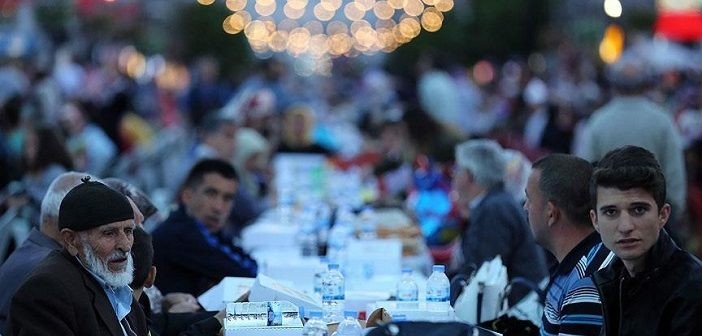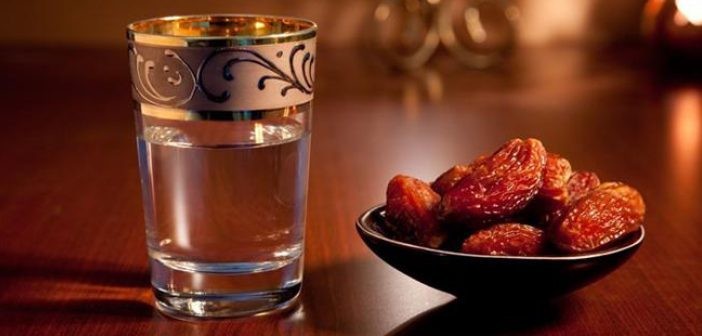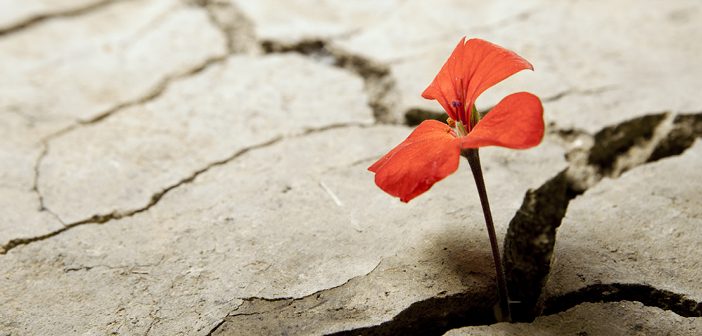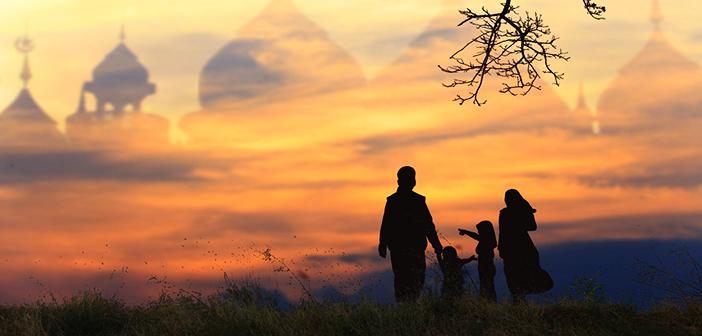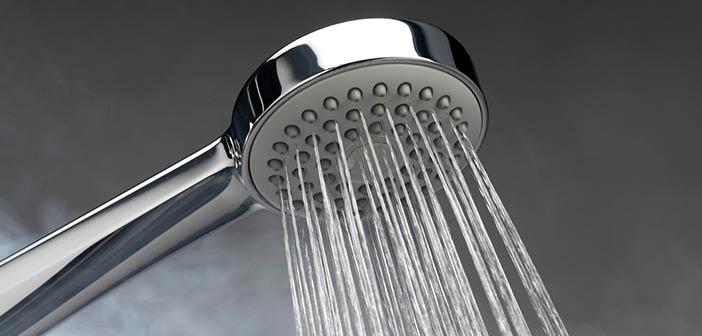
The Essential Acts (Arkan) Of Hajj and Umrah (Shafii)
What are the essential acts of hajj in islam? What are the necessary of umrah in shafii?
Note: One does not go to the region of Arafat while performing umrah. That is because “waqfa in the plain of Arafat” is not listed among the essential acts of umrah.
1. IHRAM
Even though when the word ihram is used, the first thing comes to mind is the white seamless apparel worn during pilgrimage, it actually refers to the state of the pilgrim. Ihram is the state in which pilgrim makes certain things and acts, such as clipping nails, having haircut, picking up plants in and around Mecca, etc. which are normally permissible to him, but unlawful as long as he is in that state.
Afaqis (those who come to Mecca from outside) enter the state of ihram in miqat places. Those who come to Jidda by airways must make intention and enter the state of ihram when they are in the air before passing above the miqat line.
Residents of Mecca enter the state of ihram for hajj within the borders of Haram, and for umrah in places like Tan’im or Arafat, which are outside the borders of Haram area. When the afaqi pilgrims, who are released from the state of ihram when performing hajj or umrah, want to enter the state of ihram again, they act just like Meccan residents.
Sunnah Acts of Ihram
- It is a Sunnah to perform major ablution beforehand when going out of the house or entering Mecca, even if the pilgrim is a menstruating woman.
- Perfuming the body after performing major ablutions. For a woman to dye her hands up to the wrists with henna, but without inscriptions.
- Removal of underarm hair and pubic hair, trimming one’s moustache, fingernails and toenails.
- In the case of a man, for him to put on sandals and an izar and a rida’ which are new and white (or, at the least, washed). Women wear their regular clothes covering all the required parts of their body except their face. Their face should be uncovered.
- Performing two rak’ahs as a Sunnah based practice preceding one’s ihram, provided that the time at which this is done is not one during which voluntary prayers are forbidden. As for someone who is within the Meccan precincts, he may perform these two rak’ahs no matter what time it is. The worshiper should do the Qur’anic recitations silently even if he is praying at night.
- Uttering the talbiyah, and doing so in a calm, solemn manner as a means of keeping God in remembrance. It is an emulation of the Sunnah for men to utter the talbiyah aloud, while it is a Sunnah for women to utter talbiyah silently under all circumstances.
Actions which are forbidden in the state of ihram
There are certain acts and behaviors that are forbidden for the person who is in the state of ihram as long as he is in that state. These are called “The Prohibitions of Ihram”. If a person in the state of ihram violates one of these prohibitions, there is a penalty due to this violation. Forbidden acts of ihram can be classified in terms of their related areas as follows:
A. Prohibitions that are sins and harm other people
- Rafas: It is forbidden to the person who is in the state of ihram to have sexual relations, do actions which might lead up to it, such as kissing and direct genital contact, or say things that might make one have sexual desires. If one concludes a marriage contract while being in the state of ihram, it will be null and void.
- Fusuk: Disobeying God by performing any forbidden act. For although certain actions are forbidden at all times, the prohibition against them is all the more emphatic during the time of the Hajj. The Holy Qur’an warns the believers in this regard as follows: "… And whoever undertakes the pilgrimage in those [months] shall, while on pilgrimage, abstain from lewd speech, from all wicked conduct, and from quarrelling..."[1]
- Jidal: It is forbidden to be argumentative and contentious with companions, servants and others.
B. Prohibitions Related to the Human Body
- Having hair or beard cut. Trimming the mustache.
- Removing hair from body by shaving, cutting, plucking etc.
- Trimming one’s fingernails and toenails.
- Using perfume, such as musk, for example, on one’s clothing or body. Carrying perfumes or perfume-like fragrances with the aim of smelling it.
- Applying kohl with perfume.
- Dying the hair, beard, and moustache for the purpose of adornment, putting on hair gel, and for a woman, to wear lipstick and nail polish.
- It is reprehensible for a woman to use henna while she is in a state of ihram, and that if she is in her waiting period following the death of a husband, she is forbidden entirely to use it. As for the man in a state of ihram, he may use henna anywhere on his body except his hands and feet. As for the use of henna on a man’s hands and feet, it is forbidden unless there is a need to do so.
C. Prohibitions Related to Clothing and Clothes
- Wearing dyed and perfumed clothes
- For men, wearing something which is stitched.
- For men, covering part or entire head
- For men, wearing something which extends all the way around, part or all of, one’s body, such as a shirt, trousers, a turban or a jubbah (a long outer garment). (Women should not cover their hands and faces. It is permissible for them to cover their hands and their face to cover themselves against strangers. However, the face cover should be like a veil, which hangs before her face but does not touch the face.)
- Men are likewise forbidden to wear regular shoes unless they are unable to find any sandals to wear, in which case they are permitted to wear regular shoes after cutting them out under the upper rim.
It is recommended to wear open-top shoes like sandal if it is possible.
D. Prohibition of Hunting
It is forbidden both in and outside the Haram area to hunt, kill or slaughter game animals, whether it is edible or not, point to them if they are visible, or make reference to them if they are not visible, such as referring to their eggs.
According to the Shafii School, neither hunting aquatic game nor slaughtering domestic animals like chicken and lamb are forbidden to the pilgrim in the state of ihram.
E. Prohibitions Related to Haram Area
Hunting game, cutting or picking grass in Meccan precincts and in Haram area around it are forbidden to everybody, whether they are pilgrims in the state of ihram or not. However, certain plants like the one called izhir, senna, as well as dried plants and thorny plants are excluded from this rule.
It is permissible to trim the trees, or take other actions for rehabilitative purposes. It is also permissible to pick or cut the crops planted by people.
Fruits and branches of miswaq tree can be plucked and it is permissible to graze animal in the Haram area.
2. Things that are not forbidden to the pilgrim in the state of ihram
- Taking a bath. It is permissible to use scented soap or shampoo while taking the bath.
- Changing ihram clothes and washing them.
- Brushing teeth with miswaq.
- Pulling off the broken nail or depilate an infected hair. It is reprehensible to scratch the head or body even if it does not cause plucking any hair.
- Having a tooth pulled out.
- Venesection, cupping/Blood-letting (ihtijam) without getting the head shaved.
- Having an injection and getting a wound wrapped
- Wearing ring(s), watch, glasses, and gas mask.
- Wearing money-pouch even if it has stiches, or wearing a belt around the izaar and tying it up when necessary and a hanging bag on the shoulder.
- Covering the body with something like blanket without covering the face and the head
- Taking a jacket or a coat over the shoulders without wearing it.
- Using an umbrella or taking the shade of a tent
- Hunting aquatic animals like fish and slaughtering domestic animals
- Killing animals which are not game such as crow, hawk, and harmful animals, pests and insects such as snake, scorpion, mice, fly, lice, acarid etc. and wild animals like wild dogs, lions, tigers etc.
3. To Perform Tawaf Al Ifada (Tawaf Al-Ziyarah)
The word tawaf lexically means "to turn or to walk around something”. In terminology, it means to visit the Ka’bah and turn around it seven times. Each one of these turns is called a “shawt”. Tawaf must be done around the Ka’bah. This requirement is based on the following verse: “and let them walk [once again] around the Most Ancient House (the Ka’bah)."[3]
Tawaf al-ifada is performed on the day of Festival of Sacrifice when one comes to Masjid al-Haram after having performed waqfa in the Plain of Arafat. It is also called the circumambulation of visiting (tawaf al-ziyarah).
It is not permissible to postpone tawaf al-ifada without a legitimate excuse and without performing this tawaf, hajj will not be complete. Women who are menstruating perform this tawaf after their menses ends.
The Conditions of Tawaf
- Concealment of those private parts which must be concealed during ritual prayer. If one performs tawaf al-ifada without covering the private parts, his tawaf will be invalid.
- Being free of both hadath and khabath, as in the case of ritual prayer. One cannot be in major or minor ritual impurity, menstruating, or experiencing postpartum bleeding. There should not be any material impurity on his body and clothes.
- Intending to perform the circumambulation. This is only a condition for a circumambulation, which is neither a pillar of the hajj nor the circumambulation of arrival; in these two situations, by contrast, no intention is required since the intention to perform the major or minor pilgrimage to Mecca is sufficient. The intention to perform the circumambulation must coincide with one’s being opposite the Black Stone; if someone forms this intention after passing the Black Stone, his circumambulation will only be counted from the time he passes it again. However, if one returns to a position opposite the Black Stone after forming this intention, the circumambulation will count from that point onward.
- Keeping the Ka’bah to one’s left throughout the circumambulation and facing forward. The pilgrim must keep his or her entire body away from the wall of the Ka’bah, the shadharwan, and from the hijr. If someone steps on the shadharwan or touches the wall while passing by, or if he steps inside the hijr from one end and exits through the other, his hajj will be invalid. Similarly, one’s circumambulation will be invalid if one faces the Ka’bah directly, faces directly away from it, performs the circumambulation with the Ka’bah to his right, or walks around backwards with the Ka’bah to his left.
- Beginning one’s circumambulation of the Ka’bah with part or all of one’s body opposite the Black Stone from one’s left side. In other words, no part of one’s body should be ahead of any part of the stone. If one begins the circumambulation of the Ka’bah at any other point, the distance covered before one reaches the Black Stone will not count. Once one has come around again to the Black Stone, one begins a new circuit, at which point it is necessary to be opposite the Black Stone again in the manner described above.
- Being in the Sacred Mosque or its immediate environs. Hence, one’s circumambulation will be valid so long as one is inside the Sacred Mosque, in the air surrounding it or on its roof; this applies even if one is elevated above the Ka’bah, and even if there is a barrier of sorts between the Ka’bah and the person performing the circumambulation.
- Being certain that one has performed seven complete circuits of the Ka’bah; if any of the seven is omitted, one’s circumambulation will be invalid.
- Not interrupting one’s circumambulation in order to do something else; if one does so, the circumambulation will be invalidated.
The Sunnah acts of Tawaf
- To face the Ka’bah in the beginning of the circumambulation and to stop beside the Black Stone in the direction of the Yemeni comer such that the entire Stone is to one’s right and one’s right shoulder is parallel with its edge. One then forms the intention to perform the circumambulation, after which one faces the Stone as one moves toward the door of the Ka’bah. Once one has passed the door, one is to face ahead so that the Ka’bah is to one’s left. This applies only to the first circuit.
- To walk (rather than ride) if one is capable of doing so. This applies even to women, since riding during circumambulation is a departure from the ideal unless one has a legitimate excuse for doing so. If one does have such an excuse, there is no harm in riding a vehicle such as a wheelchair. It is deemed preferable to perform the circumambulation barefoot if one will not be harmed by doing so. It is recommended that one keep one’s steps short in order to increase the reward one earns for the circumambulation.
- Perform istilam which means greeting Hajar al-Aswad (The Black Stone). It is recommended for men to touch the Black Stone with one’s hand at the beginning and kiss it lightly. It is not an emulation of the Sunnah for the woman to do so unless the area is empty, whether during the day or at night; as for the man, it is desirable for him to place his forehead on the Black Stone and for him to touch it with his hand and kiss it three times. If he is unable to touch it with his hand, he should do so with a stick or the like, then kiss whatever part of the stick came in contact with the Stone. If he is unable to do this, either, he is to point toward it with his hand or with whatever he is holding in his hand, preferably the right and perform istilam. If it is not possible to come close to the Black Stone, one should greet the Black Stone by raising the right hand up to the ear level and keeping palms open towards the Black Stone and then say, “Bismillahi Allahu Akbar (In the name of God. God is greatest)”. It is a Sunnah to do this at the end of every shawt by the right hand. When performing istilam, one should not wait in front of the Black Stone and should continue to walk.
- To utter the traditional supplication when performing istilam,
(bismillahi wa Allahu akbar. Allahumma, Imanan bika wa tasdiqan bi kitabika wa wafa’an bi ‘ahdika wa ittiba ‘an li sunnat nabiyyik, sayyidina Muhammadin Jalla Allahu ‘alayhi wa sallam)
"In the name of God. God is greatest. O God, [I perform this rite] based on faith in You and belief in Your Book, in loyalty to Your covenant, and in emulation of the example of Your Prophet, our master Muhammad".
- In the first shawt, to greet Rukn al-Yamani by right hand and then kiss the palm of right hand.
- To recite the following supplication between Rukn al-Yamani and Hajar al-Aswad:
“O our Lord! Grant us good in this world and good in the life to come, and keep us safe from suffering through the fire.” (Al-Baqara, 2: 201)
- For males to walk quickly (ramal), yet without breaking into a run. There is no jumping in the first three circuits, and in the remaining four, males are to walk at a leisurely pace. As for women, they are to walk at their regular pace.
- For the male, whether he is an adult or a boy, to wear his rida’ in such a way that its mid-section passes under his right arm while its ends are draped over his left shoulder. This is called iztiba. When tawaf ends, the shoulder will be covered and the Prayer of Tawaf is performed while the shoulder is covered.
- Muwalat i.e. to maintain continuity throughout one’s circumambulation. Hence, if someone has an occurrence of ritual impurity while circumambulating the Ka’bah, even if it takes place deliberately, he may repeat his ritual ablutions and continue the circumambulation where he left off; however, it is preferable to begin all over again. Similarly, if one of the five ritual prayers is begun during one’s circumambulation, one may perform the prayer, then complete one’s circumambulation afterwards, but it is considered preferable to start again from the beginning.
- For men and boys to remain close to the Ka’bah if the area is not too crowded and if it causes no harm or disturbance; as for women, however, it is an emulation of the Sunnah for them not to walk close to the Ka’bah, since this is an expression of greater modesty.
- To perform two-cycle Tawaf Prayer after the circumambulation; it is sufficient to perform an obligatory prayer, or a voluntary prayer other than this. It is recommended that these two cycles be performed directly after the circumambulation and that one touch the Black Stone immediately after the two cycles. If it is possible, it is recommended to perform Tawaf Prayer behind the Station of Abraham (Maqam Ibrahim); if this is not possible, then to perform it in the place called Hatim; and if this is not possible, to perform it somewhere close to the Ka’bah.
The person who performs tawaf should observe the rules of manners, avoid acts and behaviors against the spirit of tawaf, keep his eyes and hands away from all kinds of sins, and should not belittle the people he meets.
It is reprehensible to perform tawaf when feeling to go to the bathroom, to stop the tawaf before completing it fully without a valid cause, to tie the hands behind during tawaf, to spit without a legitimate reason, to place the hand over the mouth except when yawning, and to crack knuckles.
One should drink the Zam water after the tawaf. It is blessed water. In order to benefit from its blessings, one should take some from this water to his country and offer it to his guests.[4]
Types of Tawaf
1. Tawaf al-Qudum
This is the first tawaf performed by the afaqis, who intend to perform hajj al-ifrad or hajj al-qiran, when they enter Masjid al-Haram for the first time. It is a Sunnah. It should be performed before the waqfa in the Plain of Arafat.
2. Tawaf al-Ifada (Tawaf al-Ziyarah)
It is the tawaf performed on the days of Eid Al-Adha after returning from Arafat. This tawaf is one of the essential acts (arkan) of hajj. The time for tawaf al-ifada begins after midnight on the first day of Festival of Sacrifice. It is preferred to perform this tawaf on the first day of festival. It is recommended to perform it after being released from the state of ihram and after the performance of major ablution. The prohibition of having sexual relation will not be lifted off the pilgrim before the performance of this tawaf.
3. Tawaf al-Wada’
This is the last tawaf performed before leaving Mecca. It is also called Tawaf Sadr. It is the tawaf that must be carried out by the Afakis during the time of hajj, before leaving Mecca after stoning the jamras. The duties of hajj ends with this tawaf. It is an obligatory tawaf. The women who start menstruating before performing the wada tawaf and women whose period does not end before leaving Mecca are not obliged to carry out the wada tawaf.
4. Tawaf al-Umrah
This is the type of tawaf which is an essential act of umrah and performed in the state of ihram.
5. Tawaf Tatawwu (Supererogatory)
It is the voluntary tawaf that the residents of Mecca carry out occasionally. For those who come from outside Mecca, performing this type of tawaf is more virtuous than performing the supererogatory prayers.
4. SA’Y
Sa’y, which means ritual walking between the Hills of Safa and Marwa, is one of the essential acts (arkan) of hajj. Sa’y means to perform seven circuits (shawt) between the Hills of Safa and Marwa, four of which are from Safa to Marwa and three of which are from Marwa to Safa.
The Conditions of Sa’y
- To perform it with the intention of hajj or umrah.
- To begin from the Hill of Safa and end it at the Hill of Marwa.
- To complete exactly seven circuits (shawts).
- To perform it after tawaf al-qudum, tawaf al-umrah, or tawaf al-ifada. Waqfa in the Plain of Arafat should not be between tawaf al-qudum and sa’y.
Recommended (Mandub) Acts of Sa’y
- The person who will perform sa’y should be in the state of minor ablution. He should be free from hadath and najasah and parts of his body, which are required to be covered, should be covered.
- In order to perform sa’y, one should first go to the Hill of Safa and climb up to a place where he can see the Ka’bah. It is not appropriate for women to do this.
- Sa’y should be performed on foot. Those who have a valid excuse may perform it on wheelchairs.
- One should recite the traditional supplications at Safa and Marwa. The following supplication is often recited during sa’y:
Rabbighfir warham wa tajawaz ‘amma ta’lam wa ta’lamu ma la na’lam innaka antal-A’azzul-Akram
“O Allah! Forgive me and have mercy upon me and pass off (my sins) of which You are aware, and You know that of which we have no knowledge; verily You are the Most Honourable, the Most Exalted.”
- Men should walk briskly (called harwala) between the green pillars in the area of sa’y (mas’a). Before and after these green pillars, one should continue walking in regular pace. Women do not perform harwala.
One should not give breaks between shawts of sa’y. It is reprehensible to stop during sa’y without a valid excuse and to perform two cycles of prayer.
5. CUTTING THE HAIR
It is an essential act of hajj and umrah for men to have their hair shaved or trimmed and for women to trim their hair. This is expressed in the following verse: "Truly did Allah fulfil the vision for His Messenger: ye shall enter the Sacred Mosque, if Allah wills, with minds secure, heads shaved, hair cut short, and without fear. For He knew what ye knew not, and He granted, besides this, a speedy victory."[5]
For women, it is enough to cut a piece a long as the tips of their finger. For men it is recommended to trim some from their beard when they cut their hair or shave their head. It is recommended for the bald to sweep the razor on his head. Even though it is virtuous to shave off all the hair, it is sufficient to cut or pluck three single hair strands or cut a little from the tips of the hair.
The time for shaving the head is after midnight on the first day of the festival. According to the order determined by the Sunnah, one needs to stone the devil, then slaughter a qurban, and after that shave the head.
There is no deadline for cutting the hair, tawaf al-ifada (ziyarah) and sa’y. It is recommended to carry them out during the days of sacrificing a qurban. The cutting of the hair can be postponed after the days of festival, but in such a case the prohibitions of ihram continue. What is appropriate to the Sunnah is to cut the hair in Mecca. It is makruh tahriman to postpone it and have the hair cut after leaving Mecca.
6. FOLLOWING THE ORDER
One who intends to perform hajj should first enter the state of ihram, perform tawaf al-qudum (arrival) or tawaf al-ifada (ziyarah), and then perform sa’y. He should perform waqfa in the Plain of Arafat before tawaf al-ifada and the cutting of the hair. This is because Allah’s Messenger performed these action in the given order and commanded us to learn the rites of hajj from his as follows: "Learn your rituals (of hajj) from me."[6]
All essential acts of hajj except waqfa in the Plain of Arafat are also the essential acts of umrah. It is obligatory to perform the essential acts of umrah in their proper order.
[1] Al-Baqara, 2: 197.
[2] Al-Tirmidhi, Hajj, 57; Abu Dawud, Manasik, 69; al-Nasai, Hajj, 211; Ibn Maja, Manasik, 37
[3] Al-Hajj, 22: 29.
[4] https://sorularlaislamiyet.com/kaynak/safi-mezhebine-gore-hac-ile-ilgili-hukumler-nelerdir#10
[5] Al-Fath, 48: 27.
[6] Muslim, Hajj, 310; Abu Dawud, Manasik, 78; al-Nasai, Hajj, 220
Source: Fiqh1 (According To The Shafi’i School Of Islamic Law), Erkam Publications
The Definition of The Science of Fiqh (Shafii)
The Importance of The Science of Fiqh (Shafii)




